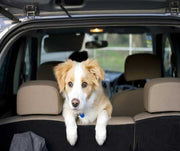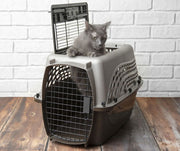Pets May Improve Social Skills in Children with Autism

Looking after an animal can be a lot of hard work, and some animals can create huge messes. But if you have the means to take care of one it is something you should do. Animals are great companions not only for grown adults but for children.
Child Development Benefits
The role of a pet can help teach things to your kids that may be hard without one. Research has shown that pets can help children create better relationships with people.1 Animals, and specifically, dogs can improve your child’s; responsibility, empathy skills, stress management, relationships, coping skills, family bonding, self-esteem, and social skills.
Social Skill Improvement
Science has proven that dogs improve social skills in children. If your child is shy and reserved, a dog can help bring them out of their shell. For children with autism, socialization can be one of the most difficult things and can make it hard to interact with children their own ages.2 Studies have shown that children with pets at home have more advanced social skills and are more assertive than those without. Their pets act as a “social lubricant” that helps to build confidence in their actions.
A study by the University of Missouri found that autistic children were likely to engage in social situations where pets were present. Children with pets at home were also reported to be more likely to introduce themselves, ask for information or respond to people’s questions. These types of interactions can be difficult for children with autism, but since they lived with a pet, their confidence was higher.4 If a child has a bond with their pet when a visitor asks questions about the animal, that child will be more likely to answer their questions and interact with the visitor.
Though dogs often get most of the credit when referring to therapeutic animals, all pets can help with developing social skills for children. Remember every child is different so don’t forget about cats, rabbits, rodents, and birds!
Sources:
Previous article

Next article

Related posts
View all-

What Supplies Do First-Time Cat Owners Need?
Bringing home a new cat is exciting, but making them feel safe and comfortable takes more than love. First-time cat owners must prepare with the right supplies to ensure a smooth transition. From a litter box to cat food and a warm bed, having the basics ready can help your new kitty settle in faster. This guide covers everything a new cat owner needs to make their new pet feel at home.
Read Article -

Celebrate National Pet Adoption Day
Adopt a Shelter Pet Day occurs every year on April 30. This special day is a nationwide initiative to raise awareness about pet adoption and encourage people to open their hearts and homes to shelter animals in need. Millions of cats and dogs enter animal shelters every year, hoping for a second chance at life.
Read Article -

3 Ways a New Cat Can Change Your Life for the Better
If a cat hits you with Cupid’s arrow, Petmate can help you uncover why a feline friend belongs in your home and the bedding for cats to keep them comfortable. Whether you were planning on a new addition to the family or the cat distribution system placed one of them at your feet, there are many ways a cat can change your life for the better.
Read Article



